Local News
Gray Academy sets the pace for all other schools in Manitoba by instituting vaccine requirement for all students 12 and up
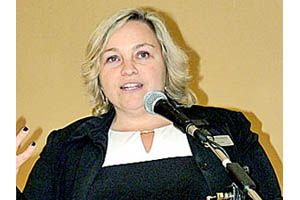
By BERNIE BELLAN I had intended to speak with Lori Binder, Head of School at Gray Academy at a pre-arranged time on Wednesday, August 25 when, on Tuesday afternoon I received an email from Lori informing me that she wanted to share with me a communication that had just gone out to all parents.
Following are excerpts from that communication:
n keeping with Gray Academy’s mission, vision and values as a Jewish day school and with the health and safety of the entire school community as our top priority, the Winnipeg Board of Jewish Education (WBJE) has implemented a mandatory COVID-19 Vaccine Policy for Students. This new policy for students is consistent with and complementary to the WBJE Vaccine Policy for Employees, Third-party Providers, Volunteers and Visitors.”
”COVID-19 Vaccine Policy for Students
”This policy requires that all students turning 12 by December 31, 2021, must be fully vaccinated to attend Gray Academy for the 2021-2022 school year.
This policy is not applicable to students aged 11 and younger, as a vaccine has not yet been approved in Canada for this age group. Once vaccine eligibility for this age group is approved, the WBJE will re-evaluate the specific requirements of its COVID-19 Vaccine Policy for Students.
“Students turning 12 within the 2021-2022 school year will be required to be vaccinated once they become eligible.
Submitting proof of vaccination
Families will be required to submit proof of vaccination by 5 p.m. September 2 to for all eligible children attending Gray Academy this year to health@grayacademy.ca. This is a secure address that will be monitored on a strictly private and confidential basis. Once proof of vaccination has been confirmed, this information will not be retained by Gray Academy, and proof of vaccination will not be kept on file.
”
Good for Gray Academy, I thought – taking the lead on an issue that absolutely needs to be addressed, and not in the hesitant way that our provincial government has shirked its responsibility to impose vaccination requirements much more widely than it has.
Of course, with a directive such as the one just issued by Gray Academy on August 24, it was bound to dominate what I had thought would be a much wider discussion about how the coming school year was shaping up at Gray Academy.
Given the somewhat controversial stance that Gray Academy was taking however, I began our conversation by asking Lori whether she had heard about a letter that had just been issued by Winnipeg’s Council of Rabbis that also dealt head on with the issue of vaccination. (You can read the full text of that letter on page 6.)
Lori said she had not heard of that letter, so I told her that the letter gave a reasoned explanation why, in keeping with Jewish law, it is fundamentally important for individuals to be vaccinated.
I told her that I had asked Rabbi Yosef Benarroch, of Adas Yeshurun-Herzlia Congregation, who forwarded me the letter, what prompted the issuing of such a letter?
Without naming names, Rabbi Benarroch told me there are certain elements within the Jewish community who are decidedly opposed to vaccinations against Covid. As Rabbi Benarroch put it: “We were approached by members of the community telling us that there is a segment of the Jewish community that is anti vax.”
Further, Rabbi Benarroch wrote, “Apparently lots of friction at the school as a result.” He also wanted to make clear, however, that the letter issued by the Council of Rabbis was in no way related to anything happening at Gray Academy. (It turns out that it was entirely coincidental that Rabbi Benarroch emailed me the letter from the Council of Rabbis shortly after Lori Binder had emailed me Gray Academy’s new directives to parents re vaccinations. As it happened, I was the conduit for both Rabbi Benarroch and Lori Binder finding out about the communications that had been issued by the respective parties.)
But, when I asked Lori whether there was anything to the suggestion that there was “friction” at Gray Academy over the issue of vaccination, she dismissed that notion, saying “we have had a handful of queries coming my way since the communication went out. We have had a lot of notes of gratitude,” she continued.
Yet, Lori added that “We are certainly aware there might be a demographic out there that may have hesitation for vaccines…We will continue to have conversations. These are unprecedented times. We are only looking to protect the children in our care in what will potentially be a fourth wave.”
“But you must have had an inkling there was going to be some push back on this policy, didn’t you?” I asked.
“The board made this decision with great care,” Lori responded. “There comes the notion that there may be challenges. What we learned all through the summer about the Delta variant was not known to us in June. It is a courageous decision by the board.”
“More than 50 percent of the kids in our school are under the age of 12,” she pointed out. “They’re the most vulnerable.”
I asked though whether “anyone had specifically said they would not send their kids to the school as a result of this directive?”
“Not yet,” was Lori’s answer, “but that could still happen.”
I suggested that the opposite of parents refusing to send their kids to Gray Academy because of the vaccine requirement would be that some parents who were leaning toward sending their kids there would now be motivated to do so specifically because of Gray Academy’s very pro-active approach toward vaccinations.
“I could can say we have had that,” Lori responded. “We came in this morning and we have had at least a few inquiries so far.”
What also might ease any pressure that Gray Academy will be facing as a result of the very forceful approach that the school has taken with regard to requiring all students 12 and up to be vaccinated would be for the province to follow suit in ordering all schools to adopt the same policy, I suggested.
“It would make life easier,” Lori agreed, with Gray Academy not having to serve as the pacesetter in requiring vaccinations in all senior high students.
In the last school year, there was only one case of Covid reported at Gray Academy, which is rather remarkable given the track record of almost every other school in the city, where some schools had to shut down entirely while others had to have entire classes put into quarantine.
“And that one case was a very minor case,” Lori noted. No classes were required to quarantine.
“There were just a handful of close contacts who had to isolate,” she added. “They were all healthy.”
Turning to other aspects of how Gray Academy will be dealing with Covid this coming school year, Lori explained that “We’ll be masked from kindergarten on up. That’s a bit of a change” from what the province required last year, which was that all students in Grades 4 and up be masked. “We still have the two-meter physical distance in elementary. In high school we have a two-meter distance available at all times, but we are now able to bring our students into a classroom where we have one and a half meters to the greatest extent possible,” Lori said.
“What about the cohorts? Are you still maintaining them?” I asked.
“We’re maintaining cohorts for elementary and for high school. Our digital health screening will also continue. That was very effective last year for staff and students. Recess will have students in masks and cohorted,” Lori said.
“It’s easier to get those routines set and maybe if things ease up (on the Covid front), then maybe we can ease up” on all the quite stringent rules that will be in place regarding mask wearing and social distancing, Lori explained.
I wondered whether there was going to be any further continuation of the online education program which, you may recall, Gray Academy first entered into in the spring of 2020 with its very successful “Gray Away” program, when all high school students were forced to take classes online.
“We will have that if a child is forced to quarantine or isolate,” was Lori’s response, “if they’re a close contact or if someone in their home has Covid.”
I wanted to pivot to something more positive to report, so I asked: “Are there any new teachers in the school this year?”
“We’ll have a number of new staff members – in elementary and high school, in both general studies and Judaic studies,” Lori answered. “We’ll be sharing that with our school community on Monday (August 30).”
“Have you had any staff either retire or switch careers because they just can’t deal with all the pressure that comes with all the restrictions as a result of Covid?” I asked.
“No,” was the short answer.
On another positive note, moreover, Lori noted the fact that students in the high school will now all be vaccinated may allow more flexibility in terms of allowing those students to leave campus during lunch hour – get some fresh air, go for a walk to the store – of course all while still wearing masks, but that would have been something that would not have been allowed last school year.
I suggested it’s a good thing Gray Academy is located in Winnipeg, not in Winkler. “You might have a tougher time with parents there,” I remarked. Lori did not comment.
I asked whether there was anything else Lori wanted to add.
“I’m glad some of our kids had a chance to be at summer camp this year,” Lori said.
Between the kids who were able to go to day camp, BB Camp as campers or to Massad for its leadership training program, a good number of high school students were able to experience camp this past summer, Lori pointed out.
“It makes a huge difference being able to come back to school after a summer where there was some purpose,” she said in conclusion.
Local News
New Israeli restaurant opens in River Heights

By BERNIE BELLAN (July 6, 2025) It’s been a long time since our community has been able to welcome the opening of a restaurant that specializes in Israeli food.
That void is now going to be filled with the opening of The Green Falafel, at 1833 Grant (corner of Centennial – next to the Subway).
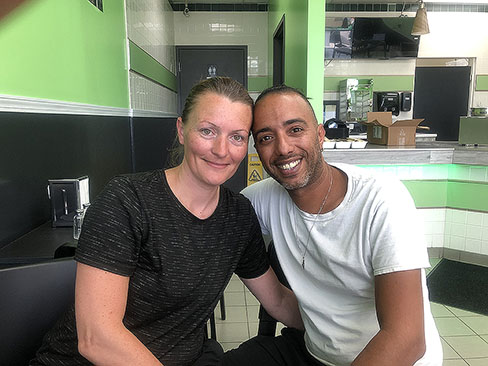
The restaurant is the fulfillment of a dream long held by the husband and wife team of Ariel and Eden Maudi, who have been living in Winnipeg the past 11 years.
Ariel, who was born in Israel and grew up in Beer Sheva, says that he worked in telecommunications in Ramat Gan for several years. He adds though that he had always dreamed of owning his own falafel stand in Israel, but life was difficult there and he decided to come to Canada as a tourist to see whether there were any opportunities here for him, Eden and their two young children.
Eden, who was born in Russia and moved to Israel with her family in 1996, stayed behind with the two kids, who were both pre-schoolers, while Ariel tested the waters in Canada first.
Ariel says he came to Canada as a tourist in 2013. His first stop was in Toronto, where he acquired his 1st class driver’s license. At the end of 2013 he moved to Winnipeg where he began working as a truck driver. Soon he found himself employed as a successful sales person at Vickar Nissan where, he says, he once achieved the status as the top car sales person in Canada. After working at Vickar Nissan for a number of years, Ariel began working as an installer for Bell MTS.
Meanwhile, Eden began working at a Walmart, later at the Costco on Regent.
But, when the opportunity to move into a space that had been previously occupied by another restaurant, but which had closed, became available, Ariel and Eden decided to open their own Israeli restaurant in an area that hadn’t seen Israeli food served since the controversial closure of Bermax Café in 2019.
The Maudis say that they will be serving a variety of Israeli dishes – all vegetarian, and that they will be fully kosher.
The “green” in Green Falafel, by the way, Ariel Maudi explains, comes from the cilantro and parsley that are added to the chickpeas. In addition, their pitas will be coming from Israel and will be baked fresh daily.
The Green Falafel will be open from 10-8 daily. Delivery will be available through Uber Eats and DoorDash.
Call 204-557-7837 for information.
Local News
Previews of shows with Jewish performers at this year’s Fringe Festival July 16-27

For show dates and venues go to winnipegfringe.com
By BERNIE BELLAN As has been our custom for many years now we try to find shows that have either Jewish performers or themes that would have particular appeal for Jewish audiences. Many of the Jewish performers at this year’s festival have been here before, but several are new. In no particular order here are blurbs about the shows we’ve found that fit the criteria I’ve just described. (By they way, if we’ve omitted a show that should be included in our list there’s plenty of time to get added to this post. Just drop me a line at jewishp@mymts.net.)

You’ve Been Served: A One-Woman Show About Divorce, Cults, and Coming of Age at Midlife
Noemi Zeigler
You are hereby summoned… to laugh, cry, and maybe belt out a Streisand number in solidarity. You’ve Been Served is a raw and riotous solo comedy by writer-performer Noemi Zeigler. It all begins when Noemi is served divorce papers on top of a garbage bin lid while taking out the trash—an undignified start to a full-blown midlife unraveling.
At 50, still clinging to her dream of becoming a singer, she falls under the spell of a music producer slash self-help guru, joins a spiritual cult, and, instead of landing a record deal, she lands in jail. Behind bars, with help from her long-buried inner child, she begins to reclaim her voice and her power. Turns out, dreams really do come true—just not the way she expected.
The show features vividly drawn characters—including a manipulative cult leader, a toxic ex-husband, and a jail guard named Roach who shares Noemi’s obsession with the fashion of Charlie’s Angels (the ‘70s TV version, of course.)
With salsa dancing, twerking, and a belting rendition of Don’t Rain on My Parade, Zeigler dives into abandonment, reinvention, and self-rescue. As she confronts perimenopause, she discovers it’s not the end—it’s the new puberty. The show touches on grief, sexuality, and spiritual confusion, but Noemi’s childlike optimism asks: What if your breakdown is actually your breakthrough?
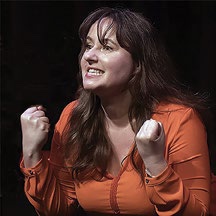
You’re good for nothing… I’ll milk the cow myself
Written & Performed by Natacha Ruck
France, 1981: The first socialist president is about to be elected and young Natacha is ready to implement her own political platform. But first, she has to take down the schoolyard bully,emasculate the rules of French grammar and make off with grandmother’s chocolate.
If you think you know the limits of Jewish mothers, evil grandmothers and transcontinental lovers, meet Natacha Ruck’s family. This true tale of three generations of women, facing three world wars, is equal parts hilarious, shocking and zany.

A One Human Being, Potentially Comedic Performance of Beauty and the Beast NEW WORK!
Written & Performed by Alli Perlov
Be our guest! Local high school drama teacher Alli Perlov is back for a tale as old as time. Can she sing? Not really. Can she act? That’s debatable. Will you laugh? Oh… probably.
Perlov plays dozens of characters, some human, some animal, and many objects, in a comedic exploration of Beauty and the Beast.
In an homage to this brilliant musical adventure, through witty commentary and unstoppable energy, Perlov aims to entertain an audience that isn’t forced to be there like her students.

Hockey Sticks and Beaver Pie
Written & Performed by Melanie Gall
Take a trip around Manitoba. From the 30,000 ft. St. Adolphe snow maze to the Narcisse snake dens! After all, where else holds both the title of Slurpee Capital of the World and the Guinness Record for the most people simultaneously howling like wolves?
Deanna Durbin, Terry Jacks and Burton Cummings are among the many homegrown stars, and Hockey Sticks features their music along with original songs and the stories that make this province unique.
Starring Melanie Gall from past shows Piaf & Brel, Ingenue and Toast to Prohibition
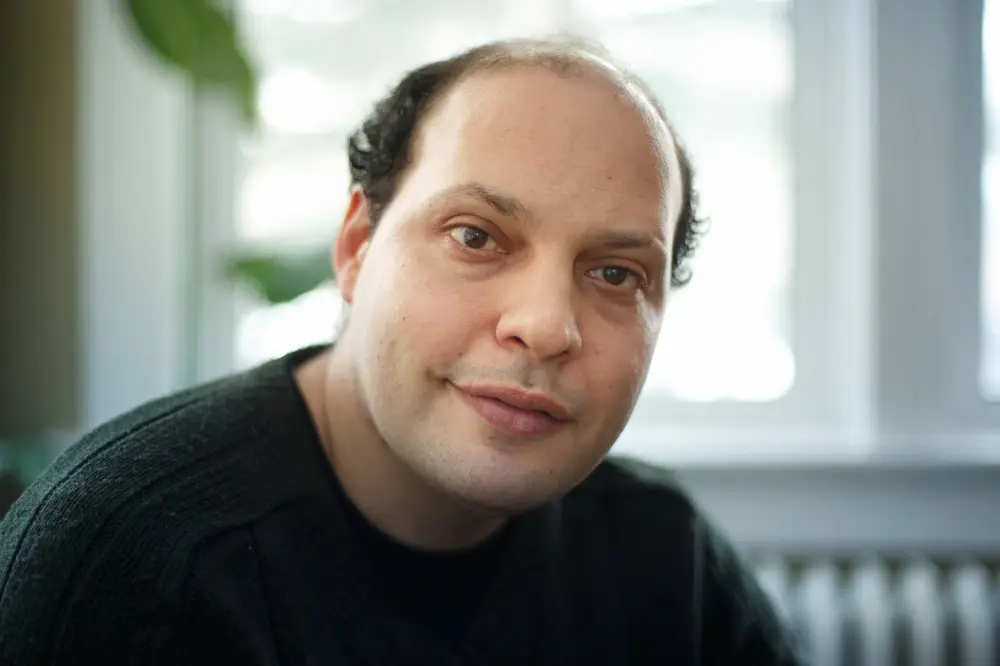
Nerohilarity Exposed
Produced by Adam Schwartz
We all sometimes feel exposed, whether that’s as a fraud or a pretender.
The performers of the award-winning Neurohilarity show, Danielle Kayahara (Laugh Out Loud CBC), Carole Cunningham (Yuk Yuks, The Debaters), Adam Schwartz (Winnipeg Fringe) and Rollin Penner (Yuk Yuks, CBC, Rumors, Winnipeg Comedy Festival), apply a comedic spin to the experiences that make us feel insecure, stripping away the emotional weight with nittygritty jokes and stories that will have you laughing uproariously.
Brilliantly awkward.

A Lesbian in the Kitchen
Willow Rosenberg
Professional lesbian Willow Rosenberg takes you on a journey through the centuries, superstitions and tablespoons of her lifelong passion for baking in this spiritual successor to 2024’s Jenny Award-nominated A Lesbian in a Bear Store.
Whether you have a favourite spatula, bake once or twice a year, or live in constant fear of being told to “just fold it in”, this one-woman show about family, joy, tradition (but make it gay),
Judaism, comfort, home (but make it gayer*), love, chemistry and magic is for you!
*Who’re we kidding, it’s all gay!

Eleanor’s Story: An American Girl in Hitler’s Germany
Written & Performed by Ingrid Garner
(Ed. note: Although Ingrid Garner isn’t Jewish, we thought the theme of this show might have a special appeal for Jewish readers.)
Based on Eleanor Ramrath Garner’s best-selling memoir, this 16x internationally award-winning adaptation – performed by her granddaughter, Ingrid Garner – details Eleanor’s youth as an American caught in Second World War Berlin.
Punctuated with humour and accompanied by cinematic sound and video, Garner embodies her ancestors in this coming-of-age odyssey, delivering an account of war that is more relevant than ever.
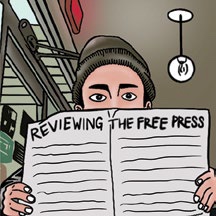
Reviewing The Free Press 2
Benji Rothman
The Winnipeg Free Press has run amok, reviewing each and every Fringe show over the past two decades without consequence or recourse. Now, it’s their turn… again.
In this refurbished work that debuted at last year’s Winnipeg Fringe, Benji Rothman once again takes the Winnipeg Free Press to task. In this (mostly) new, (hopefully) hilarious 45-minute show, Rothman dives deep into their past and exposes their faulty journalism, imbalanced reporting and, of course, embarrassing typos.
Local News
Jewish performers at this year’s Winnipeg Folk Festival July 10-13
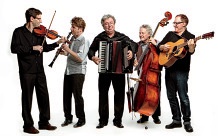
The Black Sea Station
Long ago, there were the klezmorim, itinerant musicians who roamed the back streets of Eastern Europe, playing at parties for meals and a few coins. The sound they honed then was a visceral exploration of life’s joy, and its loss; they could whip audiences into a frenzy of dancing, or bring them to tears with the mournful wail of a clarinet. Today, Winnipeg’s own The Black Sea Station is carrying on this tradition. Featuring Daniel Koulack (bass), Victor Schultz (violin) and Myron Schultz (clarinet) — cofounders of seminal local klezmer act Finjan — along with Moldovan accordion wizard Nikolai Prisacar and multi-instrumentalist Ben Mink, the quintet transports listeners to a time and place long past. Through a mix of original songs rooted in history, and traditional tunes spun up with modern zest, they whirl through the exuberant klezmer sounds of their Eastern European heritage, tending the old ways with deep love and respect.
The Black Sea Station will be performing Sunday, July 13, at 1:00 pm in Snowberry Field.
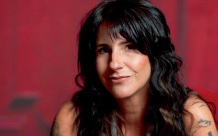
Romi Mayes
Romi Mayes has taken some hard knocks in her life, but she’s never faded away. For more than 25 years, Manitoba’s first lady of blues-rock has been a lynchpin of the Canadian roots scene. She earned that position the old-fashioned way, through her gritty, passionately emotive music. With her sizzling guitars and full-throated rasp, the Juno-nominated performer howls and purrs through razor-edged lyrics, rocking out wherever she can find a stage. She’s long been one of the hardest-working musicians on the circuit, keeping a busy slate of gigs and mentoring up-and-coming artists to get a foothold on the trails she blazed. Now, after a nine-year hiatus from the studio, Mayes has put her scintillating sound back on record with her long-awaited seventh album, Small Victories — a return that leaves no doubt, no matter the ups and downs, Mayes is here to stay.
Romi will be performing Friday, July 11, at 1:00 pm in Burr Oak.
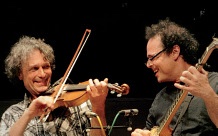
Leonard Podolak (with Matt Gordon)
Ireland’s Matt Gordon is a fiddler and singer, whose fleet-footed clogging and thigh-slapping hambone has taken stages by storm since the 1980s. Leonard Podolak is a virtuosic master of the clawhammer banjo, who for decades has whipped up some of Manitoba’s wildest roots parties with his band, The Duhks. Put those talents together, and they can promise you this much: we’re all gonna have a real good time. Longtime friends and musical collaborators, Gordon and Podolak deliver an exhilarating trip through old-time Appalachian music. Their performances seamlessly blend intricate instrumental lines with heartfelt singing and dazzling dance. They’ve teamed up on a few records over the years, including 2020’s bigband extravaganza Power Wagon: Live At Shanley’s. But the best way to experience this duo’s toe-tapping, hand-clapping chemistry is to see it live.
Podolak and Gordon will be performing A concert with a side of clogging Sunday, July 13, at 3:00 pm in Folk School.
